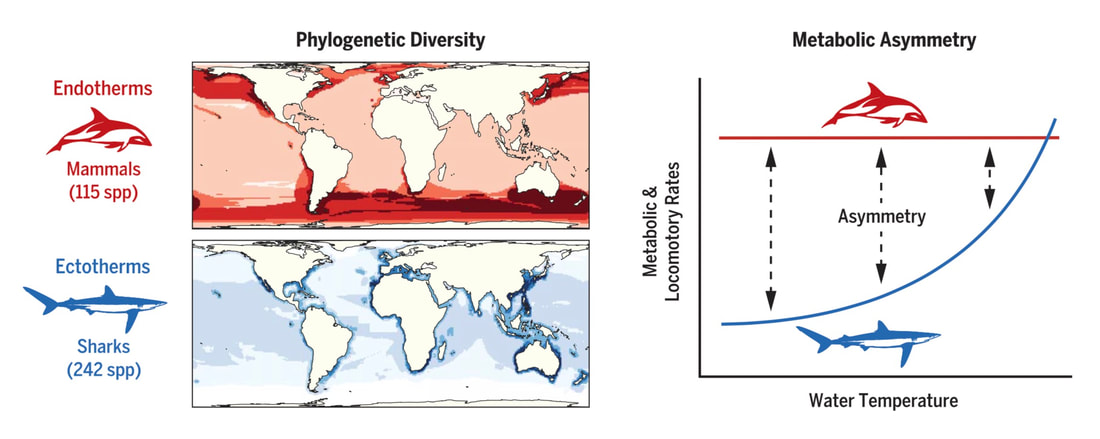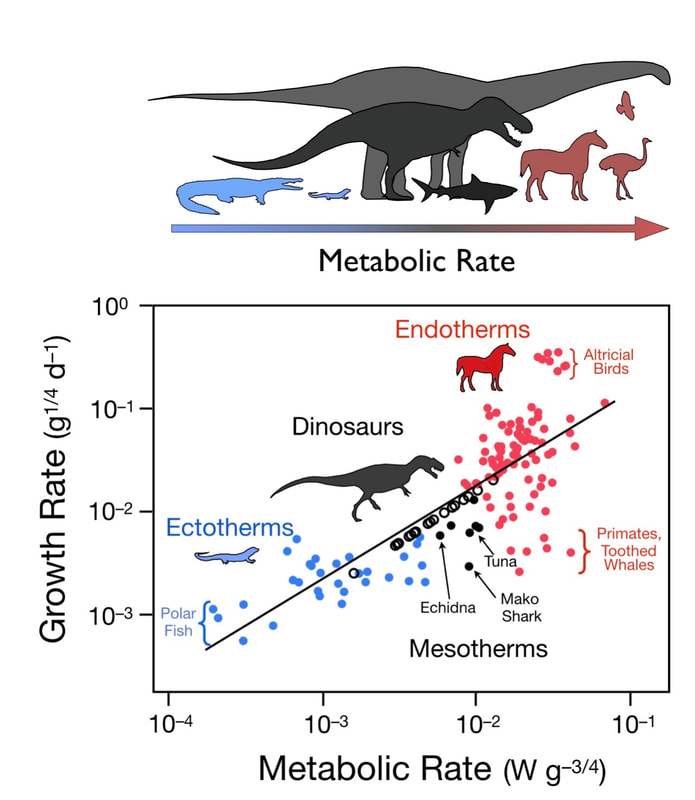Metabolic rate sets the pace of life in organisms, shaping rates of growth, reproduction, locomotion and resource use in individuals. However, comparatively little is known about how metabolism affects broader ecological scales, such as species interactions, community assembly and diversity. My research address these questions. How does fast-metabolizing, 'warm-blooded' endothermy shape competitive and predatory interactions compared to slower, 'cold-blooded' ectothermy? Does thermoregulation drive patterns of biogeography? What is the ecological and evolutionary significance of metabolic power?
Shark, Trees, and Dinosaurs: Scaling Metabolism to Global Diversity
Research Themes
Energetics across the PhanerozoicWere dinosaurs endotherms or ectotherms? Are there macroevolutionary trends in thermoregulation and metabolic rates? What is the temporal dimension of organismal energetics?
To better answer these questions I compared fossilized growth rates in dinosaurs to growth, metabolic rate and thermoregulation in living animals. The results suggest many dinosaurs may be 'mesotherms' - which metabolically increase their body temperature but do not defend a thermal set point (Grady et al, 2012). This puts them in the company of tuna and great whites. I am currently working to extend the analysis of ancestral metabolic rates to other taxa using phylogenetic methods, and explore spatial patterns of whale evolution from a metabolic perspective. |
From Individuals to Communities |


